Bloodstream Infections
Bloodstream infections, also known as bacteremia or septicemia, occur when bacteria or other pathogens enter the bloodstream, leading to a systemic infection. These infections can arise from various sources, such as wounds, surgical sites, or infections in other parts of the body. Gram-positive bacteria, including Staphylococcus aureus and Streptococcus species, as well as Gram-negative bacteria like Escherichia coli and Klebsiella pneumoniae, are common culprits. Immunocompromised individuals, those with indwelling medical devices, and patients undergoing invasive procedures are at an increased risk of developing bloodstream infections. Symptoms may include fever, chills, rapid heartbeat, and low blood pressure, and severe cases can lead to sepsis, a life-threatening condition. Diagnosing bloodstream infections involves blood cultures, where a sample of blood is tested for the presence of bacteria or fungi. Early detection is crucial for prompt and targeted antibiotic treatment. Empirical antibiotic therapy is often initiated based on the likely pathogens until culture results are available. Antimicrobial stewardship practices play a pivotal role in preventing the emergence of antibiotic-resistant strains. In cases of complicated infections, removal of infected catheters or surgical intervention may be necessary. Timely and appropriate management is essential to reduce mortality and prevent the progression to severe sepsis or septic shock.

Francis J Castellino
University of Notre Dame, United States
Ranjan Ramasamy
ID-FISH Technology, United States
Saurabh Chattopadhyay
University of Kentucky College of Medicine, United States
Rico Leonardo Lizbinski
Northern Light Health, United States
Sasha Leibholz
New York Presbyterian Columbia/Cornell, United States
Lauren Gruffi
New York Presbyterian Columbia/Cornell, United States



Title : Pathogen-derived noncanonical epitopes: Are they valuable targets for novel vaccinations and shall we be concerned about autoimmune responses?
Michele Mishto, Francis Crick Institute, United Kingdom
Title : Bioterrorism through the ages: Historical perspective, emerging threats, and medical countermeasures
Claudia Ferreira, Sorbonne University, France
Title : Changing population immunity to COVID-19 in the context of infection, vaccination, and emerging SARS-CoV-2 variants
Ranjan Ramasamy, ID-FISH Technology, United States
Title : Extensively drug-resistant bacterial infections: Confronting a global crisis with urgent solutions in prevention, surveillance, and treatment
Yazdan Mirzanejad, University of British Columbia, Canada
Title : Measles vaccination coverage indicators in 2023 and advance towards measles elimination and eradication by 2030
Pedro Plans Rubio, College of Physicians of Barcelona, Spain
Title : Severe influenza and other related respiratory infection cases during Omicron era in Japan
Masafumi Seki, Saitama Medical University International Medical Center, Japan